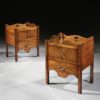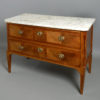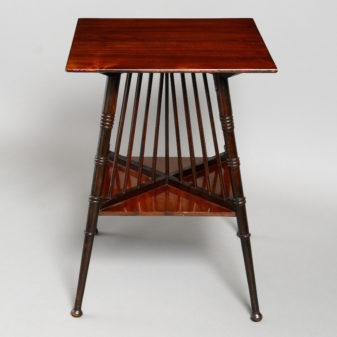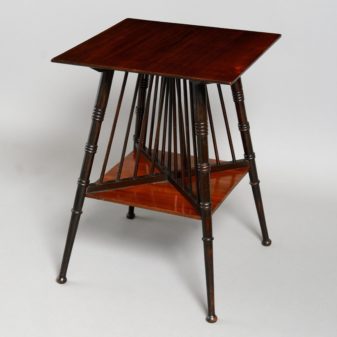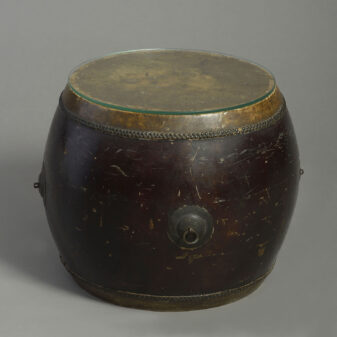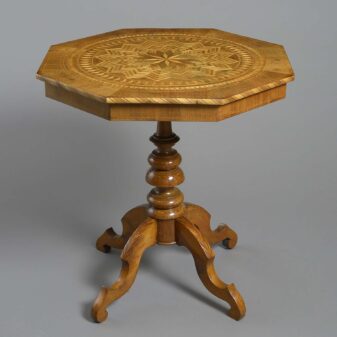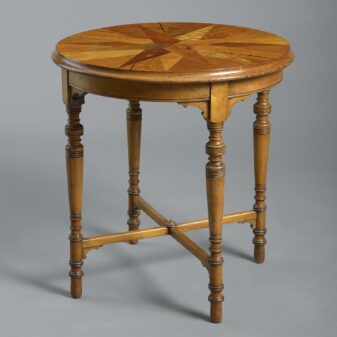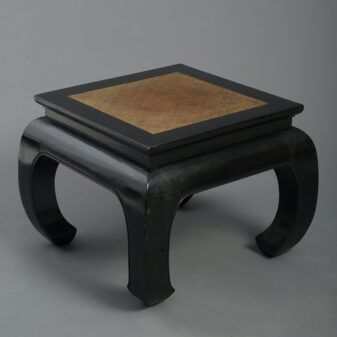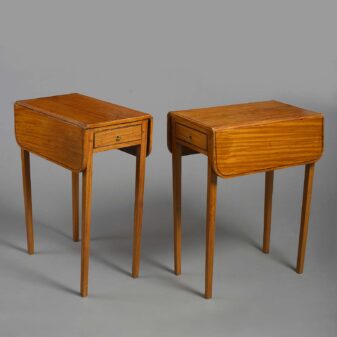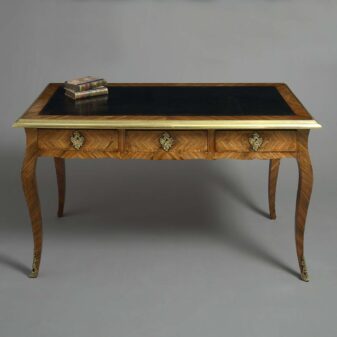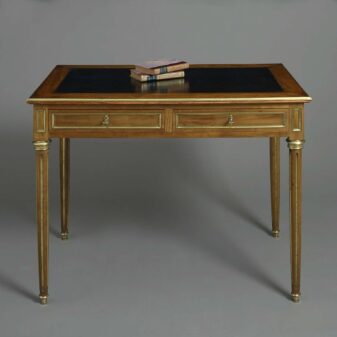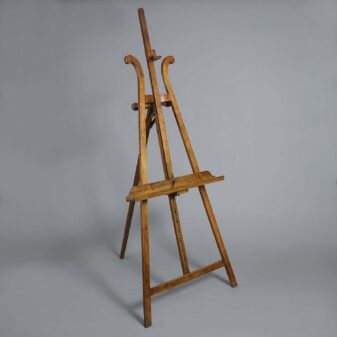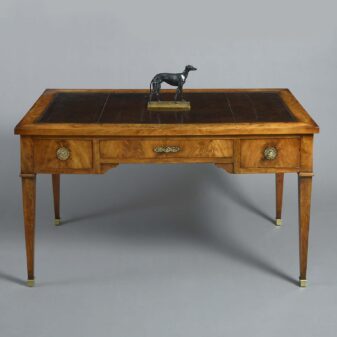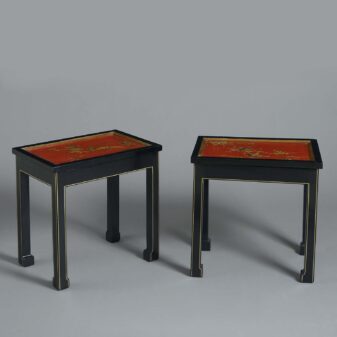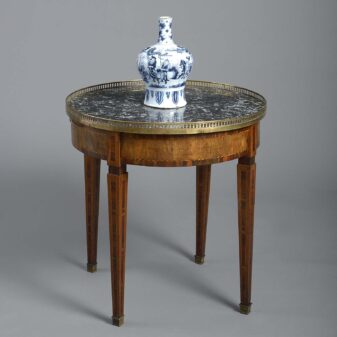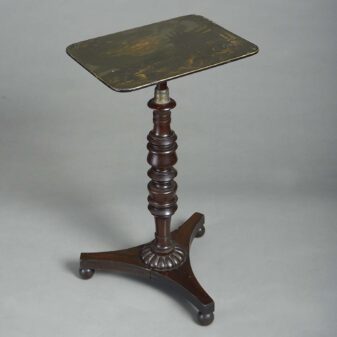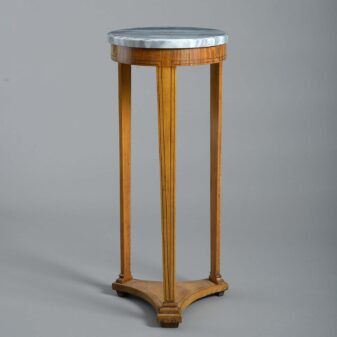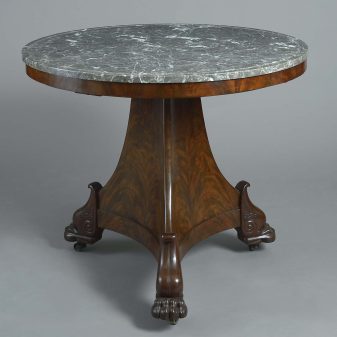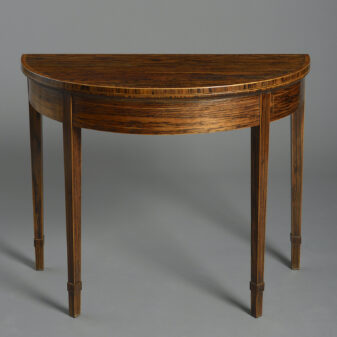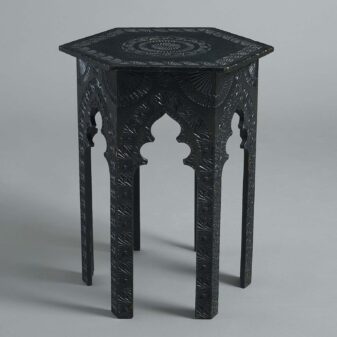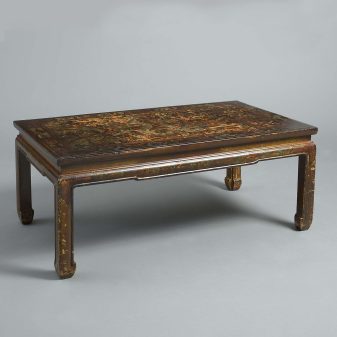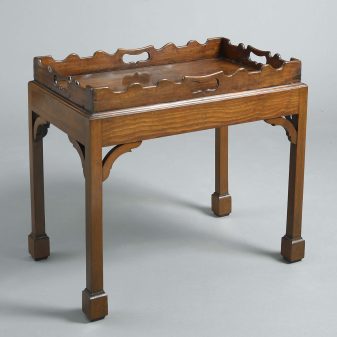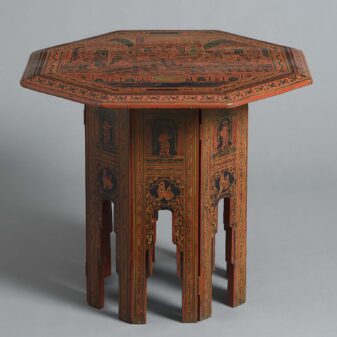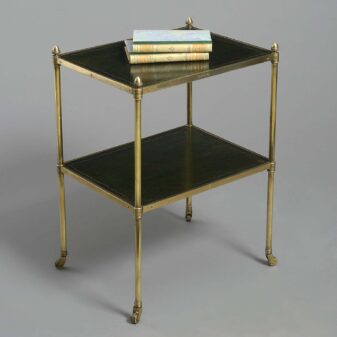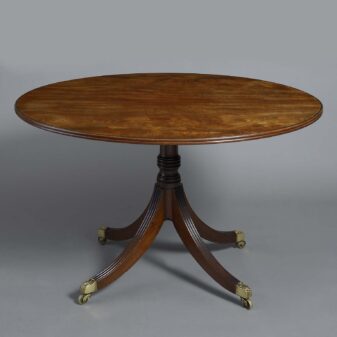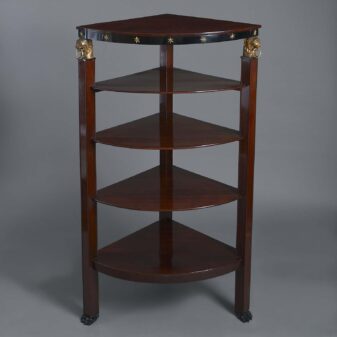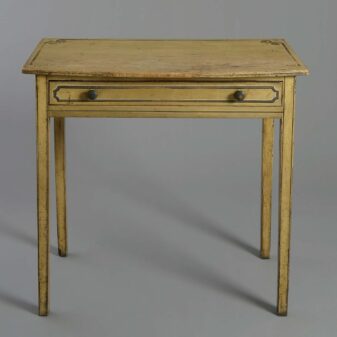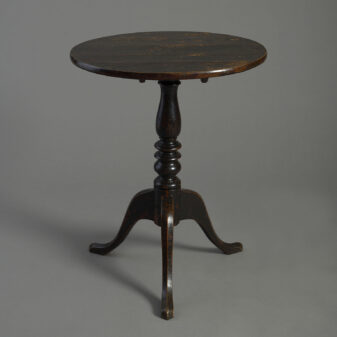Circa 1880 England
A Late 19th Century Aesthetic Movement Occasional Table
£1,250
SOLD
Height 55 cm (21.65 inches)
Width 40 cm (15 3/4 inches)
Depth 40 cm (15 3/4 inches)
A late 19th century Aesthetic Movement occasional table, the square mahogany top supported upon four ebonised splayed turned legs with internal spindle decoration and a lower mahogany shelf. In the manner of Liberty & Co.
The Aesthetic Movement began in the 1860s in the studios and houses of a radical group of artists and designers, including Dante Gabriel Rossetti and William Morris . These young reformers explored new ways of living in rebellion against the design standards of the age.
Over the next two decades, aestheticism germinated, created by architects, craftworkers, poets, critics and philosophers in order to generate a movement dedicated to the concept of pure beauty. The Aesthetic Movement, whose slogan was ‘Art for art’s sake’, was sometimes in deep contrast with the professed materialism of Britain in the 19th century. Aestheticism spread with a conspiratorial excitement, combating the popular morally sententious, anecdotal art of the Victorian age.
This was mainly a painter’s movement, and it had its own dedicated showplace, opened in 1877: The Grosvenor Gallery in Bond Street, which, with its palatial décor of gilt and inlaid marble and silk walls, was a sensuous experience in itself. This became the primary display case for works of artists such as GF Watts, JM Whistler, Albert Moore and especially Edward Burne-Jones.
The cult of beauty expanded way beyond the gallery. Art was as much related to architecture and interior design, including Oriental, Arts and Crafts and ‘the modern country cottage’ styles
At first, English designers and manufacturers followed the pattern of conscious imitation established on the Continent. Apart from prints, free use was also made of Japanese cloisonné wears, ivories, bronzes, lacquer and textiles. English potters in particular were well accustomed to the decorative principles of oriental design and so began almost immediately to turn the pure European form of Japonisme into an essentially decorative chinoiserie. The speed with which Japanese styles were accepted in England was a result of a well-established decorative Oriental tradition that blurred the boundaries between Japanese and Chinese arts as styles became increasingly Oriental.
Throughout the history of the Aesthetic Movement, Liberty & Co, with its imaginative design and high quality construction and simple practicality, always enjoyed a prominent position. It was responsible for some of the most beautiful and enduring pieces of furniture from that period. This table relates very closely to the furniture of Liberty & Co and its structure shows the direct influence of Japonisme.

